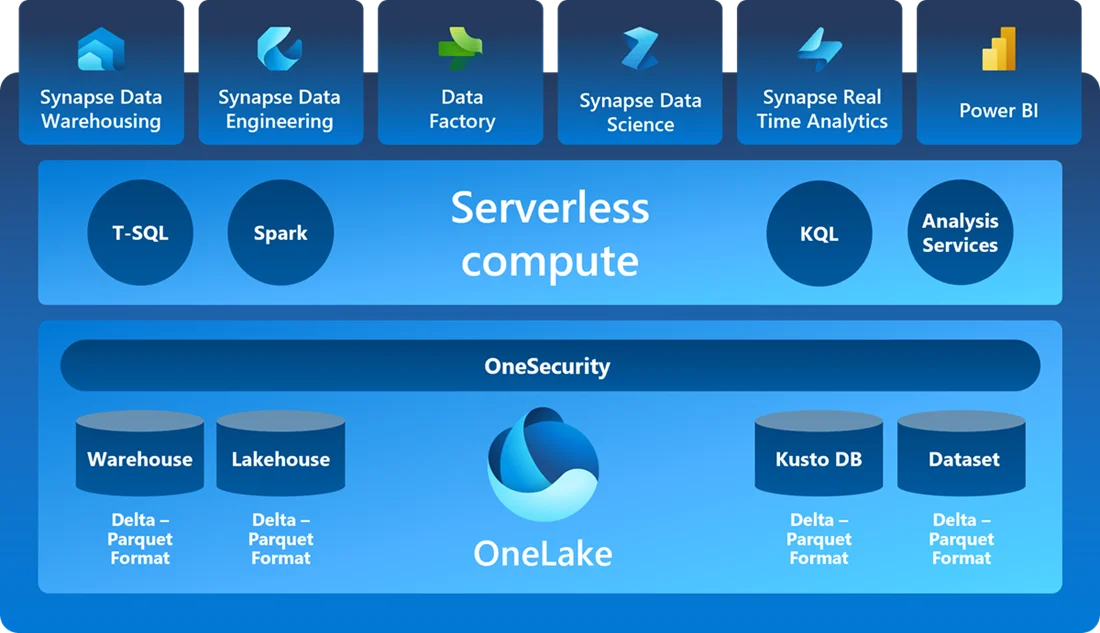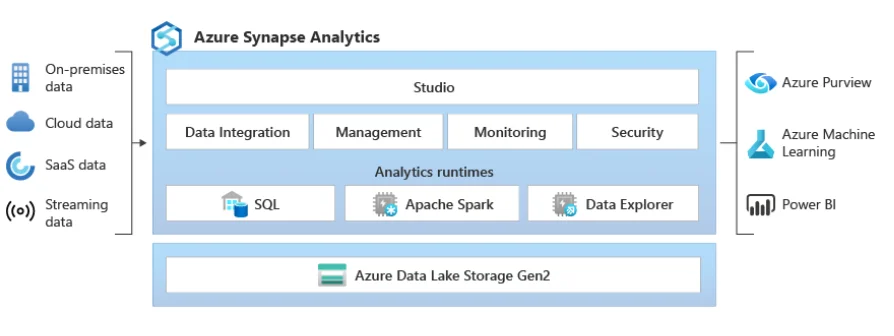
Navigating the Data Seas: Microsoft Fabric vs. Azure Synapse Analytics
Introduction:
In the dynamic realm of data management and analytics, Microsoft offers two stalwart solutions – Microsoft Fabric and Azure Synapse Analytics. As organizations grapple with ever-expanding data workloads, understanding the differences between these platforms becomes crucial. In this article, we embark on a journey to unravel the intricacies of Microsoft Fabric and Azure Synapse Analytics, comparing their architectures, capabilities, and key features.
Microsoft Fabric: A Unified SaaS Powerhouse
Microsoft Fabric stands as a testament to the evolution of data solutions, presenting itself as an end-to-end Software as a Service (SaaS) offering. Aimed at catering to a spectrum of data engineering, science, analytics, and business intelligence needs, Fabric brings together diverse workloads under a single roof. This includes Data Factory, Synapse Data Warehouse, Synapse Data Engineering, Synapse Data Science, Synapse Real-Time Analytics, Power BI, and Data Activator.
At its core, Microsoft Fabric boasts full-service capabilities, emphasizing data movement, data lakes, data engineering, data integration, data science, real-time analytics, and business intelligence. The platform is built on an open, lake-centric design known as OneLake, offering a streamlined solution that eliminates the need for organizations to cobble together analytics services from multiple vendors.

Microsoft Fabric architecture and its components – Source: Microsoft Fabric documentation.
Azure Synapse Analytics: PaaS for Data Warehousing and More
In the other corner, we have Azure Synapse Analytics, positioned as a Platform as a Service (PaaS) solution. Synapse Analytics addresses enterprise data warehousing, integration, and analytics use cases. Bundling together various tools in a platform called Synapse Studio, it integrates SQL technologies for data warehousing, Spark technologies for big data, and deep connections with other Azure services such as Power BI, CosmosDB, and AzureML.

Azure Synapse Analytics architecture overview – Source: Microsoft.
Key Differences in Architecture:
Delving into the architectural disparities, Microsoft Fabric operates on the OneLake storage layer, providing a centralized repository for data across cloud warehouses and lakes. Seven essential workloads run seamlessly on OneLake, offering a holistic data management experience.
On the other hand, Azure Synapse Analytics builds its foundation on Azure Data Lake Storage (ADLS) Gen2, paving the way for a robust data warehousing and analytics infrastructure. While Fabric shifts away from the conventional proprietary SQL Server format, Synapse Analytics leverages components like Synapse Studio, Synapse SQL, Apache Spark, and Azure Data Lake Storage Gen2 to deliver its capabilities.
Comparing Capabilities:
Both solutions retain core data workloads such as data engineering, data warehousing, data science, and real-time analytics. However, Microsoft Fabric introduces next-generation capabilities, departing from conventional data storage practices. Unlike Azure Synapse Analytics, Fabric stores data in the open data standard of Delta-Parquet within OneLake, providing a central, multi-cloud repository.
Choosing Your Workspace:
Another critical aspect is the workspace each platform offers. Azure Synapse Analytics features Synapse Studio, a centralized workspace for building, maintaining, and securing solutions. In contrast, Microsoft Fabric utilizes a Power BI-based interface organized around personas such as data science, data engineering, and real-time analytics.
Pricing:
Synapse’s pricing model, involving various factors like Data Warehousing Units, cluster sizes, and compute costs, makes consumption estimation complex.
Fabric simplifies pricing by focusing on purchased capacity bundles, adding variability with the option to pause capacity. Despite this, it remains simpler compared to Synapse’s intricate pricing structure.
Conclusion:
As organizations navigate the data galaxy, choosing between Microsoft Fabric and Azure Synapse Analytics involves a nuanced understanding of their architectures, capabilities, and features. Each solution caters to distinct needs, and the choice depends on factors such as data storage preferences, workspace requirements, and the level of control organizations seek. Ultimately, both platforms exemplify the cutting-edge innovations in the data landscape, empowering organizations to harness the full potential of their data for strategic decision-making and business growth.
Recent Posts
- Beyond the Rear-View Mirror: How Modern Analytics Is About Predicting the Future, Not Just Reporting the Past
- “What If…?” — Moving from Static Dashboards to Strategic Conversations with Your Data
- The Power BI Revolution: Why Giving Data to Everyone Is the Smartest Business Move
- Why Your Data “Plumbers” Are Your Most Valuable Growth Asset
- Data-Driven or Data-Overwhelmed? How to Build a Culture That Actually Uses Analytics

